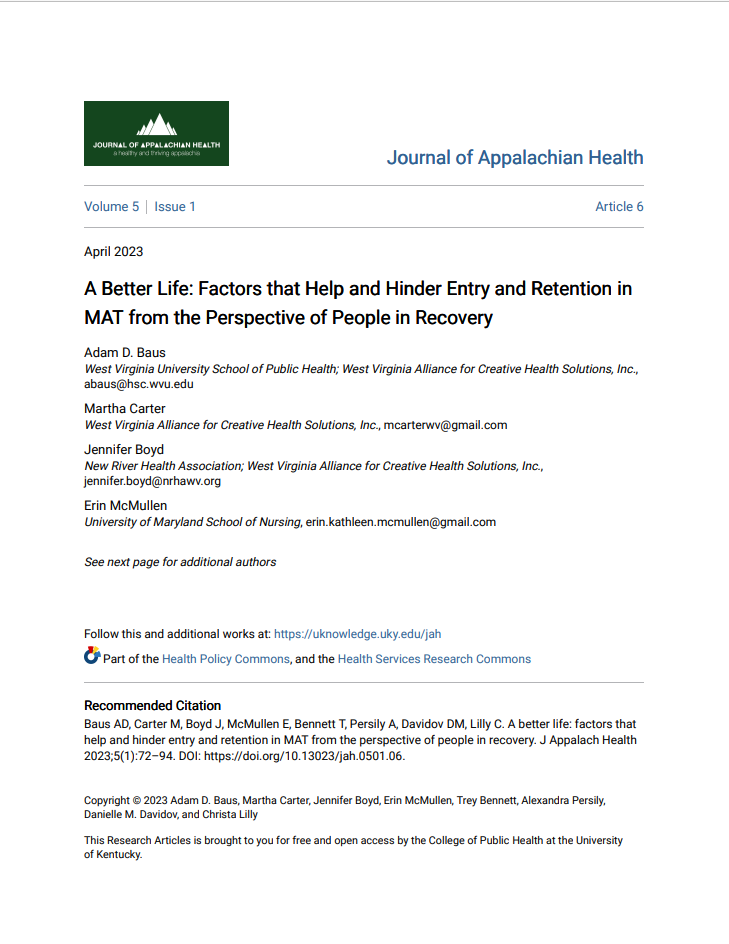Headline
Perspectives from People with OUD on Barriers and Facilitators to accessing MAT.
Context
Opioid-related deaths in the U.S. are increasing at an alarming rate and West Virginia has the nation’s highest drug overdose mortality rate compared to other states. While there are evidence-based approaches, such as medication-assisted treatment (MAT), to treating opioid use disorder (OUD), only 28% of patients who need MAT for an OUD receive it. MAT has demonstrated effectiveness in decreasing mortality, increasing retention in treatment, decreasing illicit opioid use, supporting positive employment outcomes, and improving birth outcomes among pregnant individuals with OUD. The authors of this study examine factors that facilitate or act as barriers to accessing MAT in West Virginia.
Findings
The authors implemented an exploratory sequential mixed-methods approach, consisting of semi-structured interviews, a survey of people with lived experience using MAT, and a literature review, to examine barriers and facilitators to accessing MAT. Respondents indicated difficulties getting a prescription for MAT and issues with Medicaid approval of the prescription. Medication availability, lack of transportation, social stigma associated with MAT, and financial burden were reported as barriers to accessing MAT. Positive experience with MAT, strong connections with program support, and family support were reported as facilitators to accessing MAT.
Takeaways
Policy and program elements were frequently cited as barriers to accessing MAT. The authors note that payers should examine and address policies that create barriers for patients in accessing MAT such as utilization management policies, delays in prescription approvals, prior authorization requirements, and copays. Additionally, with the recent federal removal of the X-waiver requirement to prescribe buprenorphine, more providers should explore how to offer MAT. State policymakers should consider offering technical assistance and additional support and guidance to providers to build a more robust network of MAT prescribers within their state.




